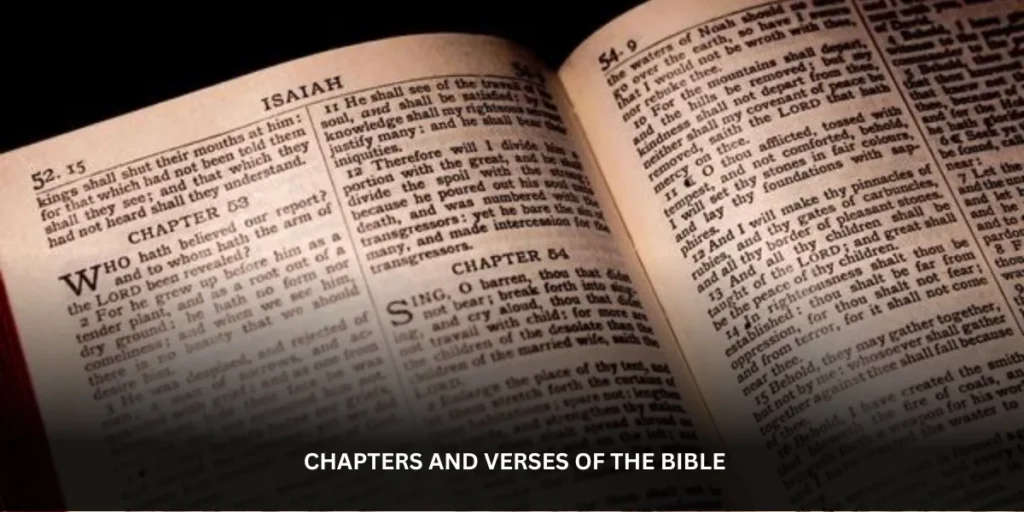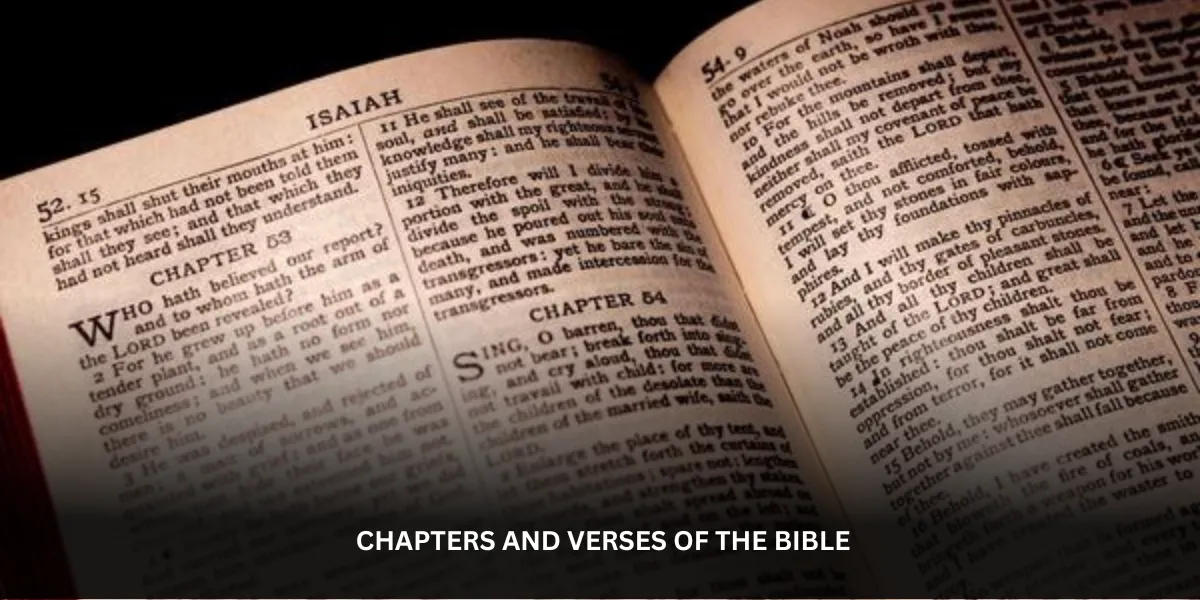
Chapters and verses of the Bible : Understanding Chapters and Verses
Chapters and verses of the Bible The Bible is a vast and ancient collection of religious texts, considered sacred by many faiths. But have you ever wondered how all those stories, poems, and laws are organized? The answer lies in a system of chapters and verses. This article will explore the chapters and verses of the Bible, delving into their origins, significance, and utility.
Explore the organization of the Bible into chapters and verses. Chapters and verses of the Bible Learn how this system helps readers find specific passages and understand the text’s message.
The Bible is a monumental work comprising various texts that span centuries of religious thought and history. To make sense of its vast content, scholars developed a system of chapters and verses, enabling readers to navigate and study the text more efficiently. This article will explain the chapters and verses of the Bible and how they enhance our understanding of this sacred scripture.
What Are Chapters and Verses?
Think of the Bible like a large book. Chapters are like major sections within that book, dividing the text into manageable chunks. Verses are like sentences or paragraphs within each chapter, providing even finer detail. This system makes it much easier to find specific passages in the Bible.
The Structure of the Bible
The Bible is made up of 66 individual books, with a total of 1,189 chapters. That’s an average of around 18 chapters per book. The Bible is traditionally divided into two main sections: the Old Testament and the New Testament.
The Old Testament
The Old Testament, which tells the story of God’s relationship with humanity from creation to the prophet Malachi, has 929 chapters. It includes books of law, history, poetry, and prophecy, each contributing to the rich tapestry of biblical literature.
Books of the Old Testament
- The Pentateuch (Genesis, Exodus, Leviticus, Numbers, Deuteronomy)
- Historical Books (Joshua, Judges, Ruth, etc.)
- Poetic and Wisdom Books (Job, Psalms, Proverbs, etc.)
- Prophetic Books (Isaiah, Jeremiah, Ezekiel, etc.)
The New Testament
The New Testament focuses on the life and teachings of Jesus Christ and the early church, with 260 chapters. It includes the Gospels, Acts of the Apostles, the Epistles, and Revelation.
Books of the New Testament
- The Gospels (Matthew, Mark, Luke, John)
- Acts of the Apostles
- Pauline Epistles (Romans, Corinthians, Galatians, etc.)
- General Epistles (James, Peter, John, Jude)
- Revelation
The Longest and Shortest Chapters
The number of verses varies greatly across the Bible. The book of Psalms, a collection of poems and prayers, is the longest book with 150 chapters. Interestingly, Psalm 117, with only two verses, is also the shortest chapter in the entire Bible. Chapters and verses of the Bible On the other hand, some books, like Jude, are so short that they don’t even have chapter divisions, just verses.
The History of Chapter and Verse Divisions
This chapter and verse system wasn’t always part of the Bible. The original texts weren’t divided in this way. It was around the 13th century that a scholar named Stephen Langton is credited with adding chapters to the Bible. Later, other scholars further divided the chapters into verses. This numbering system made it much easier for people to study and reference specific passages in the Bible.
- bible verses for married couples
- bible verses for birthdays blessing
- fruit of the spirit bible verse
How to Use Chapters and Verses
Here’s an example of how chapters and verses work together. Perhaps you’ve heard of the story of Noah’s Ark. This account is found in the book of Genesis, Chapter 6, Verse 14 onwards (Genesis 6:14 onwards). This simple reference tells you exactly where to find the story in the Bible.
The Benefits of Chapters and Verses
The chapter and verse system isn’t just about finding specific stories. It also allows for a deeper understanding of the Bible’s message. By focusing on smaller sections, readers can delve into the intricacies of the text, analyze arguments, and explore the development of ideas throughout the Bible.
Reading the Bible as a Whole
Of course, some people prefer to read the Bible from beginning to end, appreciating the overall narrative. Chapters and verses of the Bible But for those who want to explore specific themes or verses, the chapter and verse system is an invaluable tool.
Conclusion
Chapters and verses of the Bible The chapters and verses of the Bible are a testament to human ingenuity in making ancient texts accessible and understandable. This system has made it possible for countless readers to engage deeply with the Bible, finding inspiration, guidance, and wisdom within its pages.
FAQ
1. Who created the chapter and verse system in the Bible?
The chapter system was created by Stephen Langton in the 13th century, while the verse divisions were added later by other scholars.
2. How many chapters are in the Bible?
The Bible has a total of 1,189 chapters across its 66 books.
3. What is the shortest chapter in the Bible?
Psalm 117 is the shortest chapter in the Bible, with only two verses.
4. Are there any books in the Bible without chapters?
Yes, some books like Jude, Philemon, and 2 and 3 John do not have chapter divisions, only verses.
5. Why were chapters and verses added to the Bible?
Chapters and verses were added to make it easier to reference, study, and navigate the text.

